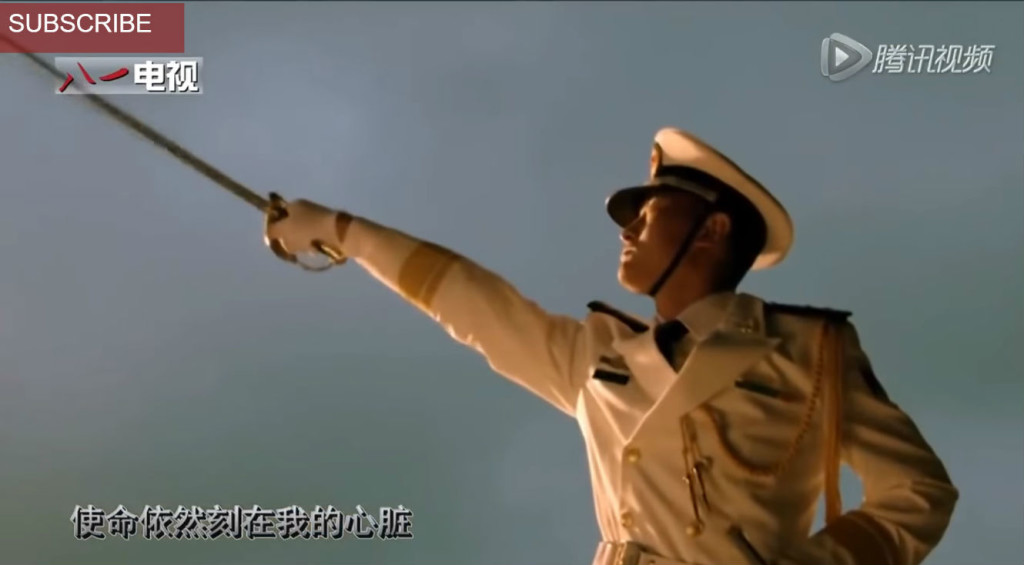What China’s New Military Rap Video Teaches Us About the People’s Liberation Army

The Chinese People’s Liberation Army (PLA) is no stranger to the art of the music video. In 2014, its first aircraft carrier, the Liaoning, was heralded in its own montage. A PLA recruitment office in Xi’an filmed soldiers dancing to a well-known pop song to boost recruitment efforts. This week, the latest iteration of China’s military-cum-musical endeavors has been released, a mysteriously catchy and aggressively patriotic rap song, “Battle Declaration” (战斗宣言). Timed to precede the observance of International Workers Day on May 1 in China, the newest addition to the PLA’s marketing campaign has, unsurprisingly, lit up the Chinese internet.
The People’s Daily, a state-run news outlet, heralded the video on YouTube as hiding “neither combativeness nor a desire to fight.” A spokesman for the Ministry of Defense sees it as striking the ideal blend between “cool” and responsibility for the security of the Chinese nation. While the video actually existed in an earlier form online in February, the lyrics in its re-release – partially available in Chinese via Baidu or in my own quick and dirty translation – are undoubtedly more assertive and confrontational than military recruiting and promotional videos seen, for instance, in commercials for the U.S. military.
The opening spoken lines are a call to serve the PLA mission:
There is always a mission in a soldier’s mind / enemies are always in sight / responsibilities are always upon a soldier’s shoulders / passion always in his chest / war can break out any time / are you ready for it?
Subsequent lyrics wax poetic in stylized Chinese prose, weaving in idioms known to intimidate many Chinese language learners. But what can be discerned from the lyrics is an attempt to boost the morale of the Chinese troops, as well as to entice the younger culturally-savvy generation contemplating a future career in the PLA. A young Chinese listener or potential recruit may be hard-pressed to decline an opportunity to join “a peaceful force, [the] motherland’s guard / a powerful army, [the] teeth of a fierce tiger.” And if lyrics alone are insufficient in terms of stirring the Chinese fighting spirit, there is also the imagery of PLA soldiers saving a damsel in distress, notably the only woman to appear in the entirety of the video.
But to interpret the latest video as purely a recruitment effort would be a significant analytical shortcoming. The PLA simply is not looking to recruit more; in fact, its reform agenda is exactly the opposite, with planned cuts of 300,000 troops and a renewed focus on fewer, but better-trained personnel underway. What the PLA does need more of, however, is a modern fighting force that embodies both national pride and sense of duty. The music video attempts to remedy such a deficit by combining flashy footage of the most advanced equipment – the Liaoning, Type-99A tanks, J-11 jet fighters, DF-11 ballistic missiles – in both training and dogfights with the patriotic and rhythmic call to fulfill the PLA’s mission.
It’s worth remembering that even with Xi Jinping’s commander-in-chief title, the PLA is ultimately the Communist Party’s army, not the army of the Chinese state. Even as it looks to nurture the morale of PLA troops and future recruits through catchy hip-hop mixes and Top Gun-esque footage, what both current and next-generation PLA recruits are being trained to do is to fight on behalf of the Party’s interests, a mission that will always put the Party before the people.
Lauren Dickey is a PhD candidate in War Studies at King’s College London and the National University of Singapore, where she focuses on relations between China and Taiwan. She is also a member of the Pacific Forum Young Leaders program at CSIS.

